How to Use Customer Segmentation to Supercharge Your KPIs
Understanding your customers’ unique wants and needs is the foundation of any successful marketing strategy. But when it comes to replacing your one-size-fits-all approach with carefully personalised, targeted content, where should you begin?
Join us as we explore the what, why and how of customer segmentation, complete with expert insights from Swanky’s Head of Optimisation, Sean Clanchy.
Written By
Esther Lowde

Whether your business caters to a wide range of people or specialises in an extremely niche product, every single one of your customers is unique. And they want to be treated that way.
In fact, 80% of shoppers say they’re more likely to buy from a company that offers them a personalised experience [1]. To keep your customers converting, you’ll need to cater to their individual wants and needs. And that’s where customer segmentation comes in.
Today, we want to explore some of the most effective ways you can segment your customers to get the most out of your personalisation investments.
We’ll also be sharing some expert insights from Head of Swanky Australia, Sean Clanchy, to get your customer segmentation strategy five steps ahead of the game.
What is customer segmentation?
Essentially, customer segmentation means dividing your customers into groups, based on specific traits, in order to market to them more effectively.
Some of the most common traits ecommerce managers segment their customers by are their age, gender, location and shopping habits, but there are plenty of other effective ways to go about segmenting your unique pool of customers – and we’ll get onto those in just a moment.
What are the benefits of customer segmentation?
Few digital marketing tactics will boost your sales more than segmenting your audience for personalisation. Here are some of the biggest benefits of customer segmentation:
Create targeted, relevant messages to engage your customers.
Using personalisation software, you can say the right thing to the right people at the right time; persuading more of your customers to click and convert. In fact, 78% of internet users in the US say personally relevant content from brands increases their purchase intent.[1]
Gain insight into your customer base.
The data you collect about each of your segments can be used to inform all of your future campaigns and fine-tune your overall marketing strategy.
Increase customer engagement and satisfaction.
Understanding your customers means giving them a better UX overall – keeping them engaged and interested in what you have to say and sell. Want proof? Studies have shown that when the subject line of an email is personalised to the recipient’s needs, email open rates are increased by 26%.
Improve customer retention and lifetime value.
With an improved UX, you’ll up your number of return customers – meaning your revenue and customer loyalty will reach new heights.
Increase your conversion rate and revenue.
As a result of your improved customer engagement, satisfaction and retention, your store’s conversion rate will be higher than ever. In fact, segmented and targeted emails now generate 58% of all revenue for the average company!

Effective personalisation is no longer a bonus – it’s a necessity. (Image source: Convince&Convert)
Customer segments to consider
When choosing a segment of your audience to focus on, there are a couple of things you should keep in mind.
Firstly, you’ll want to make sure the audience you’re targeting makes up a significant portion of your existing traffic. According to Sean Clanchy, Head of Swanky Australia:

Secondly, remember that the segment which is best for you to focus on will be unique to your business. So, instead of following lots of generalised advice, take time to identify the common threads that hold some of your biggest customer groups together.
Let’s take a look at some of the ways you might want to go about segmenting your customers:
Focus on especially high or especially low converting traffic
When you’re looking to leverage customer segmentation, there are essentially two key approaches you can take:
1. You can focus on growing an existing high-performing customer segment.
If you notice a large portion of your buyers have something in common, you can use this to your advantage.
For example, if a lot of your buyers are around the 16-18 age bracket, take this as an opportunity to tailor your UX specifically to a younger audience. This could involve prioritising the display of reviews written by other young people that your buyers could relate to, looking into influencer marketing or starting to advertise on popular social channels among teenagers (such as Instagram or Tik Tok).
2. Alternatively, you can identify an opportunity segment – a large, at-risk portion of your audience that aren’t converting – and work to deliver more value from them.
Here’s what Sean had to say:

Both of the above approaches are exciting opportunities to drive your revenue through the roof while making the most of the traffic you already have.
Location
Personalising your online experience based on where your customers live is perhaps one of the most obvious ways to approach customer segmentation – and also one of the most effective. Here’s how we’d suggest going about it:
Location-based personalisation could involve using a tool like Dynamic Yield to personalise the language and currency you display to your customers. This can have a huge impact on revenue – especially as so many consumers now shop cross-border, and 13% of shoppers who have left ecommerce sites without purchasing say they’ve done so because the prices were displayed in a foreign currency.
Another of our favourite personalisation tools, Klaviyo, has a send by timezone feature which ensures you’re reaching out to your customers at times when they’re likely to be awake and online.
You can also use location-based personalisation to feature maps on your site which point your customers in the direction of their nearest brick-and-mortar store.
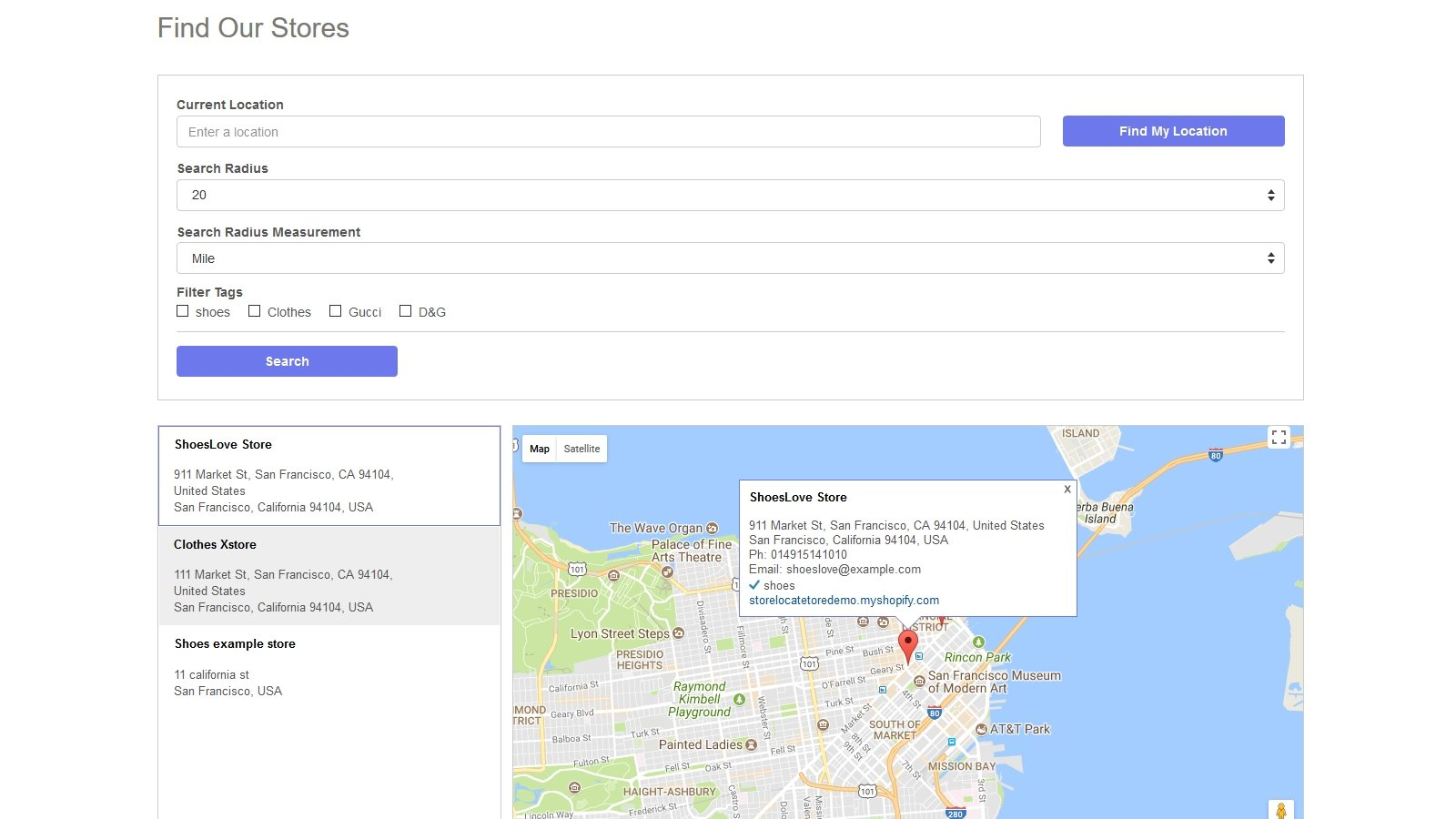
Shopify’s store locator app allows merchants to direct their customers to their nearest brick-and-mortar store. (Image source: Shopify.com)
Another way we’d recommend tailoring your users’ experiences based on where they are in the world is by making use of weather-based personalisation. For example, if your store sold a range of women’s clothing items to customers both in Australia and the UK, you’d want to merchandise your swimwear and sandals on your Aussie customers’ homepage in December, while recommending things like coats and boots to your UK shoppers at the same time of year.
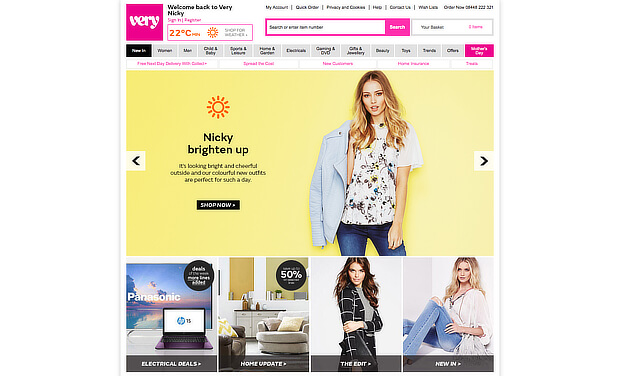

Look at the different ways UK fashion retailer Very used weather-sensitive personalisation to merchandise their homepage for a sunny day (top) and a rainy one (bottom). This tactic reportedly increased their revenue by $5m that year! (Image source: Optinmonster.com)
Product interests
Understanding your customers’ product interests (by collecting data on their previous searches and purchase history) can help you hit them with product recommendations that perfectly match what they’re likely to be looking for. According to Business Insider, cross-selling to customers in this way can increase sales by up to 10%.

Ted Baker offer their customers a handpicked selection of items based on their previous purchases and searches. (Image source: Econsultancy.com)
Sean suggests using dynamic segmentation to personalise a user’s experience as they shop – based on both their interests and the way they interact with your store:

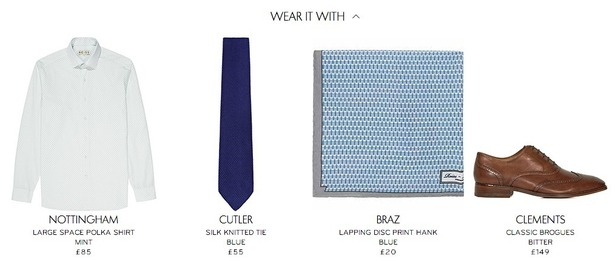
Reiss tailor their recommendations to what their customers are actually buying by cross-selling to them at checkout with this personalised ‘Wear It With’ section. (Image source: Econsultancy.com)
Gender
If you already know a customer’s gender (as they’ve arrived to your site through email advertising), you can merchandise your homepage to them by showcasing relevant products, models and colour schemes.
If you don’t know a new shopper’s gender yet, you can also segment them in session by asking them at the start if they’re male or female and then personalising the rest of their experience from there.
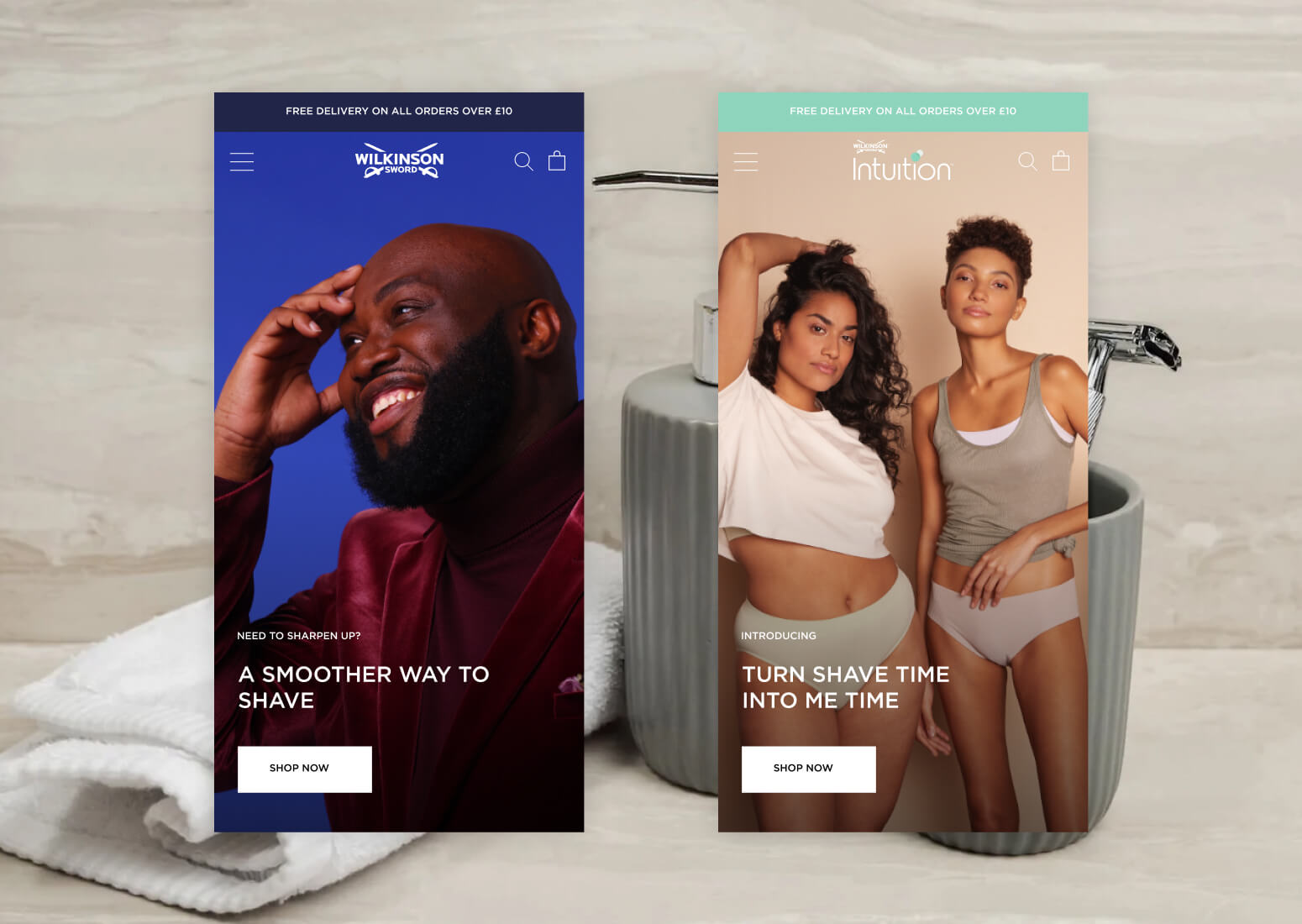
Swanky customer Wilkinson Sword have two different store experiences, one targeting customers for their male products, the other for their female product range. Returning customers are shown the same store design as they selected on their previous visit. You can find out how the Swanky team designed this in the full case study.
Here’s another top tip on gender personalisation from Sean:

Site interaction
Using heatmapping technology to collect data on the ways customers navigate your store is one of the most effective ways of finding out how best to interact with your customers – and personalise their experiences effectively.
Plus, with the dynamic personalisation features offered by many of the best personalisation tools on the market, you can also use the products your customers are clicking on to merchandise and suggest products as they go.
Shopping habits
To make sure you’re recommending the right kind of products to your customers – at the right time – you’ll also need to learn a little more about their lifestyles and the way they like to shop.
While heatmapping and other data collection strategies can be a useful way of gaining insight into your buyers’ purchasing preferences, don’t forget you can always simply ask your customers what they like.
More than half of consumers (57%) are okay with providing information about themselves as long as it’s for their benefit and being used in responsible ways.
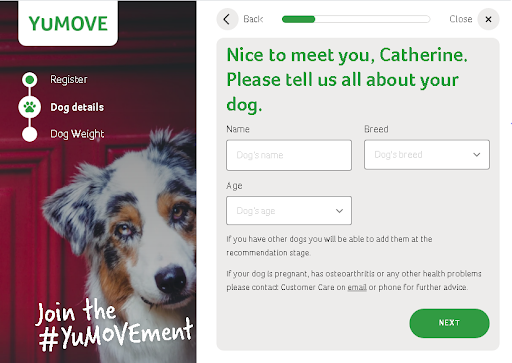
Don’t be afraid to ask questions! Pet supplement brand YuMove ask their customers details about their pet, creating zero party data that they can use to recommend the best products, and personalise the user experience upon whether the pet is a dog or cat.
Sign-up method
Personalising your customers’ UX goes beyond just personalising their on-site experience.
The way that customer signed up to your newsletter (by email or text, for example) is a good indicator of where’s best to reach out to them in future.
As a result, you’ll be able to create a tailored experience across multiple channels and communicate with your customers in the way that they want to interact with you.
Customer status
Another customer segment which you might want to prioritise as part of your personalisation strategy is the group of users who have already engaged with you enough to sign up to your newsletter or become a member of your store’s loyalty program.
For example, greeting customers who have signed up and purchased from you before with a “Welcome VIP!” message can make them feel more motivated to buy from the get-go.
Top tip from Sean:

New vs. returning user
If a shopper has bought from you before and come back for more, give them a warm welcome and offer them a reward for their loyalty (like the one we discussed above).
But even if the user has never clicked on your site before, you now have a fantastic opportunity to give them an amazing first impression of your brand.
Here are a couple of Sean’s ideas for personalising your store for new users:

That way, it won’t be long before that first time customer falls under the category of ‘loyal returning shopper’.
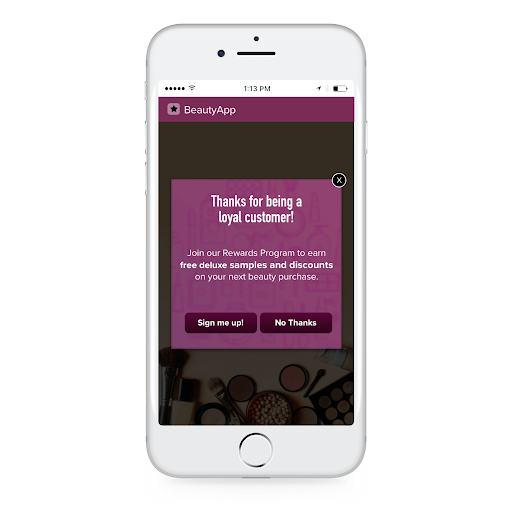
Personalise your loyal customers’ experiences with some VIP treatment. (Image source: clevertap.com)
Purchase quantity
Another important customer segment to look out for is the shoppers who come back time and time again to buy the same product – or a very similar one.
One of the ways Sean suggests personalising the shopping experience for people who are buying a lot of the same product is through setting up a prompt for them to ‘subscribe’ to it:

Identify segments using personalisation tools
One of the great things about modern personalisation software is that many of these powerful tools will automatically do the hard work for you. Listen to Sean’s recent experience with one of our technology partners, Dynamic Yield:

Customer segmentation – What next?
Congratulations! You’ve just identified one of your brand’s most crucial audiences.
But before you can start optimising that group’s experience with your brand, you’ll need to make sure the changes you make are justified by reliable information about that segment’s unique preferences, habits and needs.
Let’s break down the best way of doing this:
Firstly, you’ll need to use multiple different methods to gather important information about that segment – such as their online shopping behaviours, product interests and the marketing material they respond to most.
We’d suggest surveying your customers, analysing customer reviews and customer service tickets, and using heatmapping tools to track how buyers are navigating your store.
In particular, Sean highlights the importance of A/B testing in working out what it is that makes your customers convert:

Once you’ve found out as much as you can about your segment, you can create working hypotheses about how to engage that audience more.
As with any hypothesis, you’ll need to put your theories to the test (using your A/B testing platforms once again).
With the results from these tests in, you can use your learning to fine-tune your marketing strategy across multiple channels – from your email marketing and social media advertising to the content you display on your store’s front end.
Once you’ve started personalising your store for each segment of your audience, you’ll be a step closer to delivering your customers an experience that makes them feel at home and engaged with your brand. As a result, you’ll notice your shoppers are happier – and your revenue is higher – than ever before.
Good luck!
Get in touch
Interested in learning more about how Swanky could transform your ecommerce store with a bespoke technical toolkit and expert strategic guidance?
Get in touch with our friendly team of Shopify Plus Experts today.
We love hearing from ambitious enterprise merchants who are passionate about unlocking their ecommerce potential.
For reference:
[1] https://instapage.com/blog/personalization-statistics
